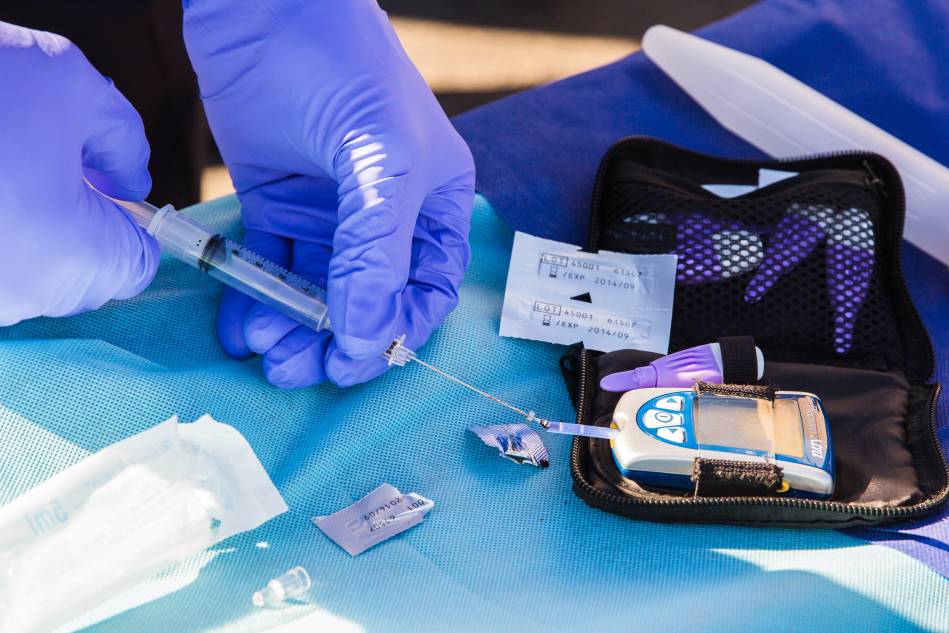
Insulin resistance – pick up the fight with sports!
 There is a growing number of people who suffer from insulin resistance, which can also be seen as an anteroom to diabetes. To diagnose, a load-bearing sugar test is required, where insulin levels associated with sugar levels are also monitored. They are usually also used to examine for some other illness such as PCOS or infertility, possible depression, hair loss, obesity, weight loss difficulties, fatigue, among others… because based on its typical symptoms, no one would basically think that the body going towards a serious problem.
There is a growing number of people who suffer from insulin resistance, which can also be seen as an anteroom to diabetes. To diagnose, a load-bearing sugar test is required, where insulin levels associated with sugar levels are also monitored. They are usually also used to examine for some other illness such as PCOS or infertility, possible depression, hair loss, obesity, weight loss difficulties, fatigue, among others… because based on its typical symptoms, no one would basically think that the body going towards a serious problem.
In this article, you can learn what insulin resistance is, how it develops, what you can do to prevent or prevent it from getting worse, and what role sport plays in all of this.
What is insulin resistance?
In the case of insulin resistance, essentially not all of the insulin can attach to the cells to allow blood sugar to enter the cells so it stays in the bloodsream, causing damage. Thus, the body releases much more insulin to achieve the required reduction in blood sugar. Over time, this leads to the fatigue of the insulin-releasing pancreas. It can also cause a number of other symptoms, which, like the symptoms of many other illnesses, may not lead in the right direction if we don’t specifically take an insulin-load level test and find out where the trouble is coming from.
What can cause insulin resistance?
Insulin resistance is a common disease these days, being the cause of many of health issues people face in this generation; and a result from many unhealthy practices, from a sedentary lifestyle to an unhealthy diet high in simple carbohydrates. Consuming simple carbohydrates raises blood sugar levels, which stimulates the body to produce insulin to lower it back to the right level. But if this is becomes a permanent process, the body will not be able to produce good quality insulin all the time, and it will be tired of producing it, so the right amount will not be available.
It can also be caused by other carbohydrate-related metabolic diseases, such as gluten sensitivity. And of course genetic predisposition should not be left out from the causes, especially if you have already had diabetes in your family. However, it can also be associated with vitamin D deficiency.
Symptoms of insulin resistance
It is difficult to identify insulin resistance based on symptoms, this is much more possible with a blood test. But when do we start to suspect, when is it worthwhile to do an investigation? Insulin resistance is often found in the investigation of other diseases as a underlying disease, such as menstrual disorders, depression, obesity, PCOS, infertility. Symptoms may include persistent fatigue, poor sleep, but we may also suspect that this may be in the background in the case of severe hair loss.
In children, behavioral disorders like hyperactivity may rise concerns for investigation, or fatigue, attention deficit, obesity can also be signs. In men, insulin levels should be monitored for outbreaks, while symptoms could be weight problems, decreased physical and mental capacity, and decreased sexual desire.
Examination and diagnosis
Insulin resistance is diagnosed by performing blood glucose measurements; with the problem being determined from the ratios of blood glucose and insulin levels of the blood taken at a given time (typically at 3 different times). After finishing the fasted blood glucose test, the person is given a sugar solution and then is checked to see the change in blood sugar and insulin levels after 60 and 120 minutes. Based on the measurements, the so-called HOMA index number is determined and taking into account the symptoms, the doctor can diagnose insulin resistance.
Dangers of insulin resistance
If insulin resistance is not detected in time, it can be the source of many other problems. As mentioned earlier, for many diseases, this is found to be the underlying disease itself. Hypertension, infertility, overweight, PCOS can often be traced back to insulin resistance, but pancreatic fatigue also results in untreated type 2 diabetes, which can only be maintained with a very strict lifestyle change.

Insulin resistance treatment and prevention
The most effective, cost-effective, and easiest way to control insulin resistance is with the right diet and exercise.
Insulin resistance diet
In the case of a proper diet, it is important to eat food that is adapted to the body’s insulin production and is consumed at the right time, because we react differently to insulin release at each time of the day. The basic key to proper blood sugar and insulin release is 5-6 meals a day with good quality and amount of carbs. This will prevent cravings, starvation or „food coma”. It is advisable to avoid meals that contain a lot of simple carbohydrates. For the snacks in between meals (e.g. in a 160 g carbohydrate diet), we can consume around 20 g of simple carbohydrates.
It is strongly recommended to eat only slow-absorption carbs for breakfast, and mixed slow and fast absorption carbs for other meals. Consumption of purely simple carbohydrates should be avoided, such as pastries, baked goods. It is preferable to choose foods with slower absorption, higher protein or fiber content and to make garnishes from them. Examples are wholemeal baked goods, pasta, qunioa, bulgur, barley or brown rice. It is also recommended to eat vegetables, oilseeds and legumes. Sugar, flour and honey should be avoided.

Sports and insulin resistance
Exercise is important for insulin resistance in several ways.
| When exercising, the body’s use of sugar increases, so less insulin is needed. In addition, this condition persists after the movement is completed. |
Exercise increases insulin sensitivity, thus helping blood sugar to enter the cell. As a result of training, in addition to a proper diet, weight loss also occurs, which also improves glucose tolerance. Strength and cardio workouts combined are the best choices.
It is advisable to exercise 5 times a week, alternating between one day of cardio training and the other day of strength training. Strength training results in an increase of muscle mass. And muscle can absorb glucose without insulin, so it won’t be as needed as before. However, before starting the exercise, it is advisable to take part in a condition assessment to be sure of your load capacity and, if possible, to have the exercise with a personalized training plan or even a personal trainer. This avoids chances of injury or a rapid loss of or motivation. Cardio training requires a moderate-intensity, longer-lasting (40-minute) steady heart rate movement like fast walking or cycling.
Insulin resistance and dietary supplements
There are dietary supplements that are specifically recommended for insulin resistance because they help develop insulin sensitivity. However, there are also some that are worth avoiding because they could deteriorate the condition.
| Proposed active ingredients include, for example, chromium, which is involved in carbohydrate and fat metabolism. Studies have shown that 200-1000 mcg can contribute to the ability of insulin receptors to lower blood sugar. |
Magnesium works in conjunction with insulin receptors to help store blood sugar. Studies have linked low magnesium levels to insulin resistance.
Berberis, or barberry, is a herbal active ingredient that is not known exactly for its effects on insulin, but some studies have found it increases insulin sensitivity and lowers blood sugar.
Resveratrol is found in grape skins or other berry peels. Doctors don’t understand exactly how it works, but they’ve found that it can increase insulin sensitivity, especially in type 2 diabetes.
In the BioTechUSA product family you will find several products that contain chromium. E.g:
-
Shaper: Complex formula with outstanding active ingredient content for those who want to lose weight
-
L-carnitine + Chrome: Before workouts to support fat burning
-
Super Lipo: Decaffeinated formula to supplement your diet
-
Fiber complex: Chewable tablets with dietary fiber
If you want to increase your magnesium intake, we recommend our Magnesium+Chelate product or Coral Calcium Magnesium.
It is best to prevent trouble and use healthy eating and exercise to avoid developing insulin sensitivity. This is especially important if you have a family history of diabetes. If in doubt, perform a three-point blood glucose measurement to find out if this problem is behind your symptoms. Unfortunately, it is a very common disease these days and often gets more severe due to improper lifestyle, so it is worth taking care in time to avoid possible adverse effects. Nutritional supplements can also help us with this, but the importance of conscious nutrition and exercise cannot be stressed enough! Both cardio and strength training are important in this regard and preferably move some every day of the week!